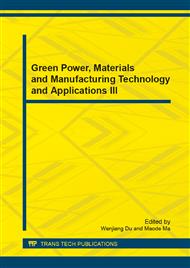p.431
p.438
p.443
p.448
p.453
p.457
p.462
p.467
p.471
Design of the Comprehensive Information Platform for the Prevention of Natural Disasters Based on Ocean Ships
Abstract:
According to the guideline and target requirements of green ship engineering and the needs on the prevention and countermeasures of all kinds of natural disasters in ocean ships, a design scheme of the comprehensive information platform for the prevention of natural disasters based on ocean ships is proposed by the author in this paper. In this design scheme, the seamless time-space integration of heterogeneous information resources in different application systems is realized through using modern technologies such as computer technology, wireless communication technology, natural disasters forecast (alerting) technology, digital information integration processing technology, geographic information system (GIS), and global positioning system (GPS), and also higher-level information services are provided for the commanders (decision makers) of ocean ships in an integrated and unified way, thus promoting the self-security ability, distress searching and rescue aid decision-making ability, and the sea (especially ocean) transport and production operation abilities of ocean ships to be effectively increased. Besides, the re-optimization idea and improvement technology for the design scheme in the future allowable conditions, the unique information transmission technology (satellite communication technology) of the prevention of natural disasters in ocean ship, and the good development prospects of green ships are generally introduced and forecasted in this paper.
Info:
Periodical:
Pages:
453-456
Citation:
Online since:
January 2014
Authors:
Price:
Сopyright:
© 2014 Trans Tech Publications Ltd. All Rights Reserved
Share:
Citation:


